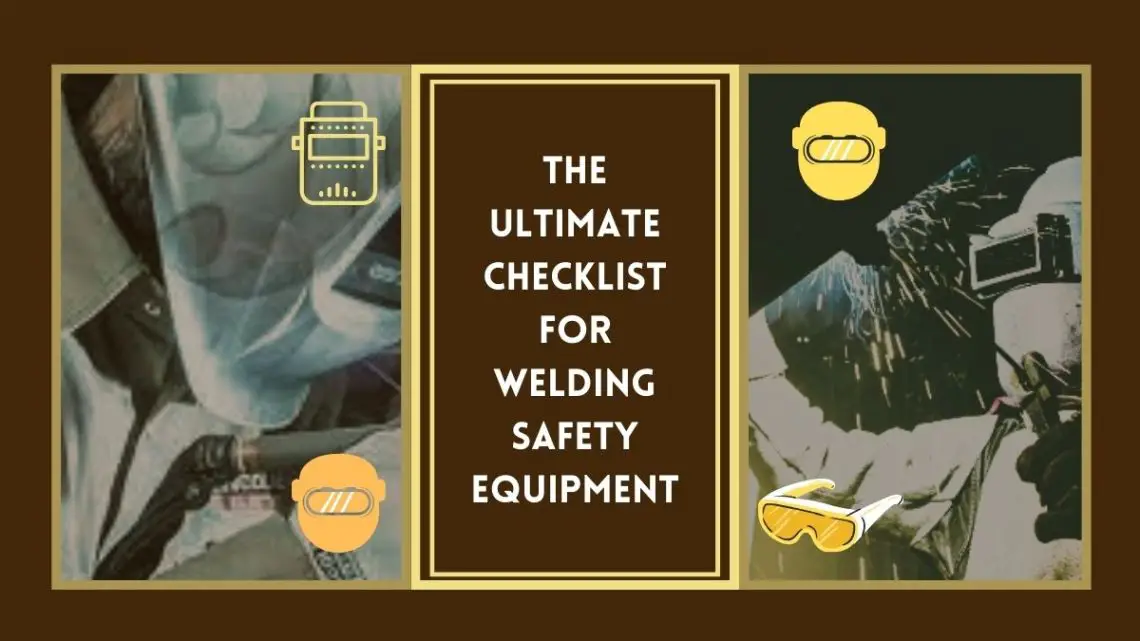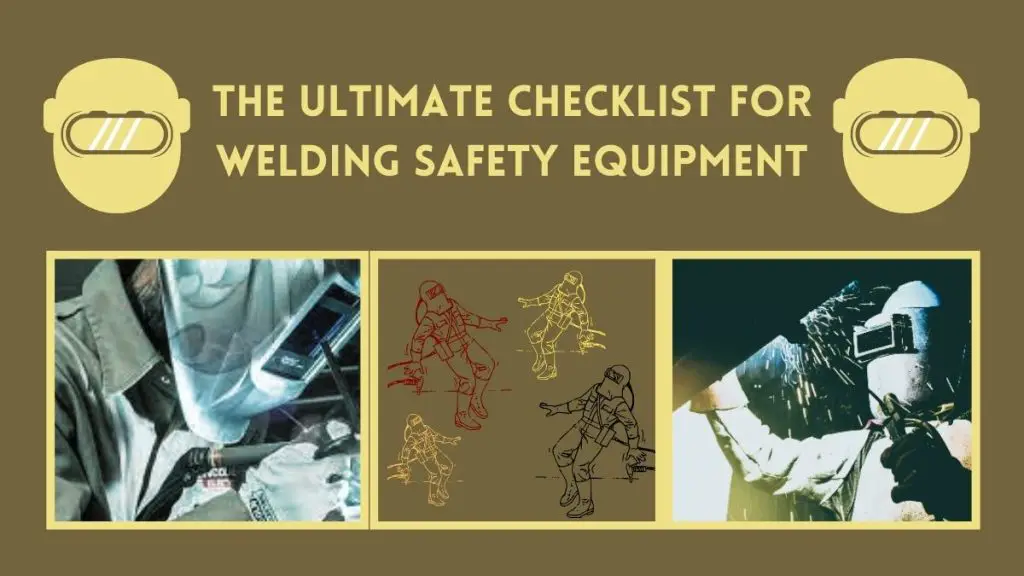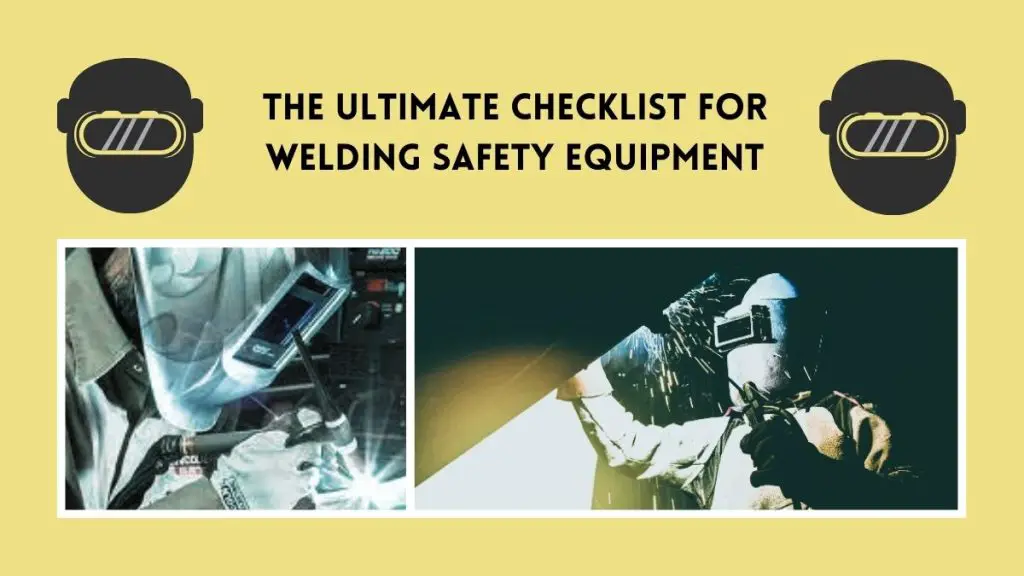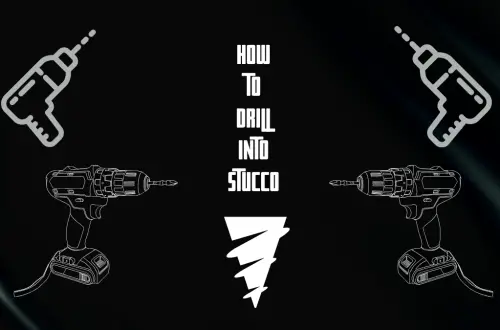
The Ultimate Checklist for Welding Safety Equipment
Welding safety equipment includes protective clothing, helmets, gloves, and goggles. These items shield welders from heat, sparks, and harmful radiation.
Engaging in welding activities demands attention to safety due to the high risks involved. Essential protective gear mitigates the potential hazards inherent in welding processes. A welder’s helmet with appropriate shading protects eyes from intense light and UV radiation.
Durable gloves guard against burns and electric shock, while fire-resistant clothing and aprons defend the skin from sparks and spatter. Eye injuries, one of the most common concerns, are preventable with safety goggles that block flying particles. Every workspace should also feature proper ventilation to avert dangerous inhalation of fumes and gases. Embracing these safety measures ensures welders can perform their tasks without facing the severe consequences that come from neglecting personal protection.
Related Article: Welding Parameters: Tips for Superior Joint Quality
You may also read: How to Weld Galvanized Steel: A Step-by-Step Guide

Related Article: How Do Auto-Darkening Welding Helmets Work? – A Complete Guide
You may also read: Small Welding Projects from Scrap Made Easy: DIY Mastery
The Critical Role Of Safety Gear In Welding
The Critical Role of Safety Gear in Welding is indispensable. Effective safety equipment is the welder’s first line of defense against the myriad hazards encountered during welding. From intense heat and light to noxious fumes and flying particles, welding can be dangerous without proper protection. High-quality safety gear ensures that welders can focus on their craftsmanship while minimizing the risk of injury or long-term health issues.
Protecting The Welder’s Eyes And Face
Welding emits bright light and harmful radiation. It is vital to shield the eyes and face from these dangers. Special helmets with auto-darkening filters adjust to the light and protect vision. A complete list of protective gear includes:
- Auto-darkening welding helmets: Filter out harmful light automatically.
- Safety glasses with side shields: Offer additional protection.
- Face shields: Guard against flying particles when not welding.
Related Article: The Ultimate Guide to Multi Process Welder
Credit: www.simcoegases.com
Related Article: How To Choose A Welder: Expert Tips for Perfect Joining
You may also read: How to Get a Welding Job: Top Strategies for Success
Shielding Skin From Heat And Sparks
Heat and sparks can cause serious burns. Protective clothing blocks these risks. Durable materials resist heat and flame spread, safeguarding the skin. Essential attire includes:
| Item | Material | Purpose |
| Welding Jackets | Leather or Flame-resistant fabric | Protect upper body |
| Welding Gloves | Leather | Keep hands safe |
| Aprons | Leather | Cover front of body |
It’s crucial to wear the right gear at all times. Only then can welders ensure their safety and deliver their best work.
Credit: safetyculture.com
Essential Wearables For Welders
For welders, safety comes first. Burns, ultraviolet rays, and bright flashes can all cause harm. That’s why having the right gear is crucial. Here’s what welders should wear to stay safe.
Importance Of Flame-resistant Clothing
Flame-resistant clothing shields welders from sparks and heat. It doesn’t ignite easily. It helps prevent burns on the job. Let’s look at some must-haves:
- Welding jackets: They protect the upper body. Made of leather or flame-resistant cloth.
- Aprons: They offer extra protection. They cover from chest to knees.
- Pants: Flame-resistant pants are better than jeans. They should never have cuffs.
Choosing the right size matters. Clothing shouldn’t be too tight. Loose fitting is better for airflow and movement. Safety comes with comfort here.
Choosing The Right Welding Gloves
Hands need protection from heat, sparks, and electricity. Welding gloves are essential. They come in various materials and styles. Let’s see what to consider:
| Material | Use | Benefits |
| Leather | Most welding types | Durable, heat resistant |
| Aluminized | High-heat welding | Reflects heat, good insulation |
Glove fit and length are important. Gloves should reach at least mid-forearm. This prevents sparks from entering. Pick gloves based on welding type. Touch and dexterity are key for control.
Remember to inspect gloves before use. Check for holes or worn spots. Replace damaged gloves immediately. Safety is in the details!
Respiratory Protection For Clean Breathing
Respiratory Protection for Clean Breathing is key for welders working amid smoke and fumes. This vital gear ensures the air entering your lungs stays clean, so taking the right precautions can make a significant difference in health and safety. Let’s explore the tools that keep you breathing easily.
Filtering Harmful Fumes
Welding releases toxic fumes that can damage your health. Using the right filters can guard against this risk. High-efficiency particulate air (HEPA) filters are top choices, as they can trap tiny, harmful particles effectively.
- Consider metals you’re working with: Different materials produce different hazards.
- Avoid long-term health issues: Protect lungs from fumes to prevent chronic conditions.
- Use exhaust ventilation: Pair personal protection with effective area fume extraction.
Selecting Appropriate Welding Respirators
Choosing the right respirator is crucial. Comfort and fit are as important as the filter quality.
| Type of Respirator | Uses | Notes |
| Half-Mask Respirator | Most welding tasks | Pair with correct filters for different job types |
| Full-Face Respirator | High fume environments | Offers eye protection too |
| Disposable Mask | Light welding duties | Convenient but less effective against vapor |
| Powered Air Purifying Respirator (PAPR) | Continuous use | Combines protection with comfort |
- Ensure a perfect fit: Seal check before each use.
- Match with job risk level: More fumes mean more protection needed.
- Replace filters regularly: Follow manufacturer guidelines strictly.
Credit: www.gowelders.com
The Importance Of Proper Footwear
Proper footwear in welding is crucial. It protects feet from serious injuries. Welders must wear special shoes every time. These shoes ensure safety from sparks, heavy objects, and electric shocks. Without them, feet are at great risk. Let’s explore why they are so important.
Preventing Injuries From Falling Objects
Welding areas often have materials that can fall. Proper shoes keep welders’ feet safe. Heavy-duty steel toe caps are essential. They block heavy objects from crushing toes. A strong mid-sole stops sharp items from piercing through. These features are vital for any welder.
- Steel toe protection
- Puncture-resistant mid-soles
- Durable materials to withstand impact
Resistance To Electrical Hazards
Electricity is a real threat in welding. Shoes must resist electric shocks. They need special insulation materials. These materials stop electric currents from passing through. Welders stay safe from electric hazards at all times. A good pair of welding boots will include:
| Feature | Benefit |
| Rubber soles | Act as insulators |
| Non-conductive materials | Prevent electric shock |
| Proper fit | Ensures entire foot is protected |
Training And Best Practices
Welding safety is crucial in any construction or manufacturing job. Training and best practices ensure welders understand how to handle equipment and stay safe on the job. Let’s explore the key safety protocols and the importance of maintaining equipment.
Understanding Welding Safety Protocols
Safety starts with knowing what dangers exist. Welding can cause burns, eye damage, and inhalation hazards. Proper training arms welders with the knowledge to avoid these risks. Safety protocols also include correct signage, work area set-up, and emergency procedures. Below is a list of critical safety measures every welder should follow:
- Wear protective gear: This includes helmets, gloves, and fire-resistant clothing.
- Check ventilation: Ensure fumes and gases don’t build up.
- Inspect equipment: Before use, check for damage or wear.
- Keep a clean workspace: Remove flammable materials.
Regular Maintenance Of Safety Equipment
Keeping safety gear in top shape is a must. Regular checks and maintenance reduce the risk of accidents. A table can help organize a maintenance schedule. Below is an example of common welding safety items:
| Equipment | Daily | Weekly | Monthly |
| Welding Helmet | Clean lens | Check headgear | Inspect for cracks |
| Gloves | Check for holes | Test flexibility | Replace if worn |
| Aprons | Wipe down | Look for burns | Ensure proper fit |
Related Article: Top 9 Best Welding Helmets of 2025 for Welding Safely

Related Article: The Ultimate Welding Tools for Beginners
Frequently Asked Questions For Welding Safety Equipment
What Is Essential Welding Safety Gear?
Welding safety gear includes a helmet with proper shading, fire-resistant gloves, protective clothing, ear protection, and safety glasses. It’s crucial for shielding skin and eyes from sparks, UV radiation, and intense heat.
How Does a Welding Helmet Protect Your Eyes?
A welding helmet safeguards your eyes from harmful UV and infrared radiation emitted during welding. It features a darkened visor, which filters out intense light, preventing eye damage known as ‘welder’s flash’.
Are Welding Fumes Dangerous?
Yes, welding fumes can be dangerous. They contain a mix of metals and gases that can lead to health issues if inhaled. Proper ventilation and wearing a respirator are key to minimizing exposure.
What Type Of Gloves Are Best For Welding?
Leather gloves specifically designed for welding are best. They should be heat-resistant, durable, and offer a good balance between protection and dexterity to handle welding equipment safely.
To know more about Welding Safety Equipment>>
Conclusion
Ensuring your safety while welding is paramount. The right gear protects against numerous hazards inherent in this demanding craft. Embrace helmets, gloves, and proper attire to mitigate risks. Remember, investing in quality welding safety equipment is investing in your well-being.
Stay safe, and weld smart.
Related Article: Top 20 Best Welding Tools of 2025 for Professional Welders
Related Article: Is Welding Hard? – The Ultimate Guide to Know about Welding






2 Comments
Pingback:
Pingback:
Ralphtraut
Your comment is awaiting moderation.
Услуги по аренде техники сегодня является удобным вариантом для строительных компаний.
Она даёт возможность реализовывать проекты без необходимости покупки оборудования.
Организации, предлагающие такую услугу, предоставляют ассортимент техники для любых задач.
В парке можно найти погрузчики, бульдозеры и другие виды техники.
https://pro-vosk.ru/jekonomicheskij-analiz-arendy-jekskavatorov-dlja-stroitelnyh-proektov/
Главный плюс аренды — это отсутствие затрат на обслуживание.
Помимо этого, арендатор может рассчитывать на проверенную технику, поддерживаемую в порядке.
Надёжные компании предлагают прозрачные соглашения.
Таким образом, аренда спецтехники — это практичный выбор для тех, кто ценит надежность в работе.
Ralphtraut
Your comment is awaiting moderation.
Услуги по аренде техники сегодня остаётся выгодным способом для предприятий.
Она помогает решать задачи без дополнительных затрат покупки машин.
Организации, предлагающие такую услугу, обеспечивают ассортимент спецоборудования для любых задач.
В парке можно найти погрузчики, самосвалы и другое оборудование.
https://traktorbook.com/kak-vybrat-ekskavator-dlya-arendy-na-stroitelnye-raboty/
Ключевое преимущество аренды — это экономия средств.
Также, арендатор имеет доступ к проверенную технику, с полным обслуживанием.
Профессиональные компании оформляют удобные договоры аренды.
Таким образом, аренда спецтехники — это разумный выбор для тех, кто ищет надежность в работе.